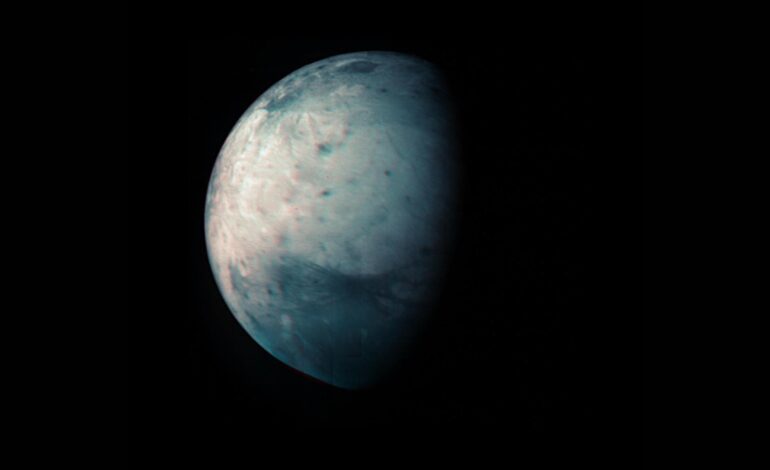Physicist Proposes Ganymede as a Massive Dark Matter Detector

A physicist from the University of Maryland has put forward an ambitious plan to transform Ganymede, Jupiter’s largest moon, into a colossal dark matter detector. This proposal aims to leverage the moon’s unique geological features to search for elusive dark matter particles that are believed to constitute approximately 85% of the universe’s mass.
Dark matter, which does not emit light and interacts only weakly with other matter, remains one of the greatest mysteries in modern astrophysics. Despite substantial evidence supporting its existence, definitive identification of dark matter particles has proven to be a significant challenge. In a preprint submitted to arXiv, physicist William DeRocco argues that Ganymede’s surface could harbor telltale signs of these particles, potentially enabling groundbreaking discoveries.
Exploring Ganymede’s Geological Features
DeRocco’s hypothesis suggests that the craters found on Ganymede may contain remnants of dark matter impacts. He posits that massive dark matter particles could have struck the moon, penetrating its thick icy crust and creating what he describes as “dark matter craters.” These craters would be characterized by distinctive minerals brought to the surface from the depths of Ganymede’s subsurface oceans.
According to DeRocco, “If you used something like ground-penetrating radar, you might be able to see this column of melted ice going all the way down through the ice.” The implications of this research could be profound, as studying these features might yield unexpected insights into the nature of dark matter itself.
This bold proposal has caught the attention of the scientific community. Bradley Kavanaugh, an astrophysicist at the University of Cantabria in Spain, noted that while the concept is intriguing, it hinges on the existence of heavy dark matter particles. As of now, there is no conclusive evidence that such particles exist, but the exploration of unconventional ideas is often crucial in the quest to solve complex scientific mysteries.
Future Missions and Potential Discoveries
The upcoming missions by NASA and the European Space Agency (ESA) could play a pivotal role in testing DeRocco’s theory. NASA’s Europa Clipper and ESA’s JUICE missions are set to launch in the coming years, and both will conduct extensive studies of Ganymede and its environment. If DeRocco’s proposal gains traction, these missions could be equipped to search for evidence of dark matter craters as part of their exploration objectives.
While the scientific community remains cautiously optimistic, it is essential to approach such bold ideas with a critical eye. Current dark matter experiments have not yet yielded definitive evidence of the existence of these massive particles. Nonetheless, the exploration of Ganymede as a potential dark matter detector exemplifies the innovative thinking that drives progress in the field of physics.
As the scientific community awaits the results from upcoming space missions, the possibility of uncovering new aspects of dark matter and its interaction with celestial bodies like Ganymede remains an exciting frontier. The continued exploration of such unconventional hypotheses could ultimately pave the way for a deeper understanding of the universe and its hidden components.






